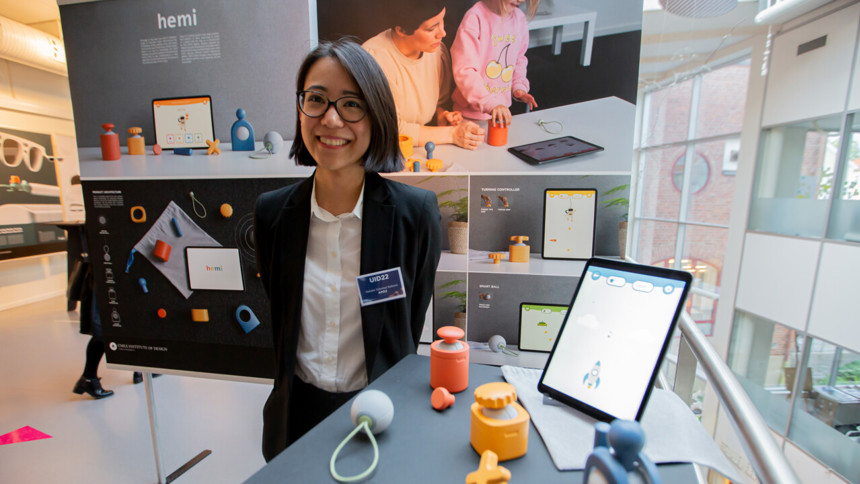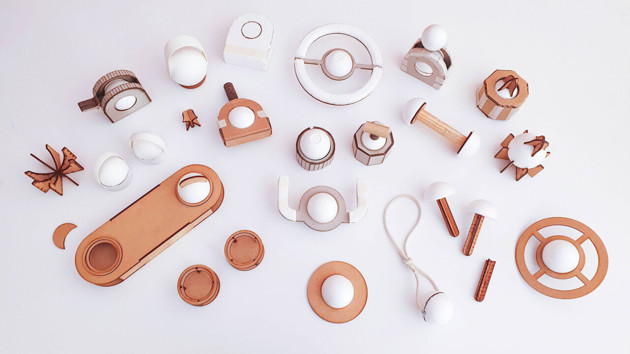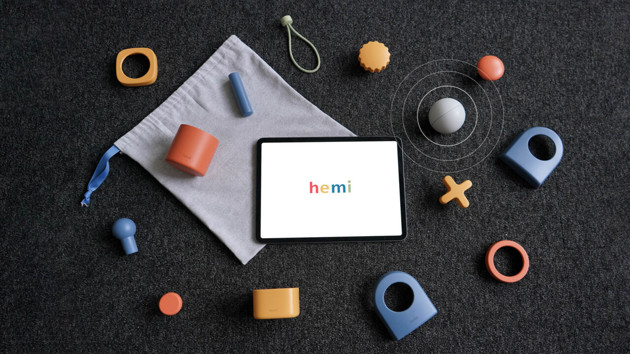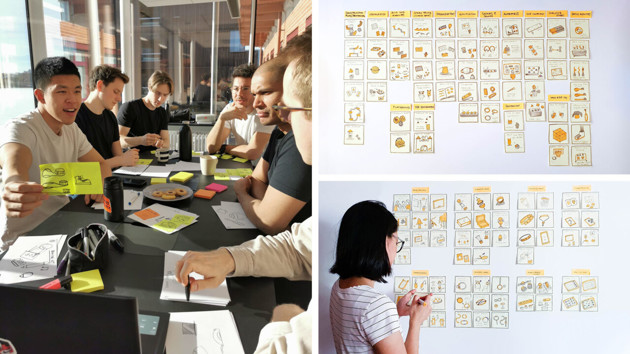Designing through the eyes of a child – Creative therapies for motor disabilities
Could small children suffering from incurable paralysis play themselves to a better everyday life? One UID22 grad project challenges the monotonous nature of crucial therapy.

Natalia's graduation project, called hemi, was created to help children who suffer from hemiplegia, an incurable condition caused by brain damage. Patients with hemiplegia have difficulties moving one side of their body.
For children with this condition, hand therapy is vital to gain independence in their daily life activities and prevent the disuse of the affected side of their body.
Existing therapy consists of repetitive exercises that children often stop doing after a while, out of pure boredom. This is a big problem since people suffering from hemiplegia need to do therapy exercises for the rest of their lives.

Early stage explorative prototypes of different theapeutic avenues for the 'hemi' design concept
ImageUmeå Institute of DesignAt the beginning of this project, Natalia Ikebara says that her focus was to explore how design can spark motivation and playfulness in the field of therapy.
"These kids will have to go to therapy for the rest of their lives. So, I wanted to see if there was a way to make hand therapy more playful and engaging over time".
To set and maintain a rehabilitation plan for a child can be extra tricky because they might not understand the therapeutic benefits of it. Natalia's key question was therefore how to get a child to willingly keep exercising at home, in addition to scheduled rehab activities?
Designing with kids, for kids
The solution was developed through extensive field research as well as interviews and workshops with specialists, parents, and user testing with kids. Several different design directions took shape during the process and finally focus landed on a hybrid system composed of digital therapeutic games and physical controllers. Its main component is a ball that uses IMU motion sensor technology (the same sensors available in an iPhone). By attaching different accessories to it, the child is able to build different types of controllers to play with.

The final design concept, 'hemi', disassembled.
ImageUmeå Institute of Design"Hemi is a system created for children to use at their home environment. The whole idea is that hemi seems fun and interesting - but is in fact a very important part of the rehabilitation", Natalia Ikebara says.
She explains how 'hemi' is created to help children improve their hand motor skills while playing different digital therapeutic games. The creative design makes small children do their therapy without even knowing it.
I wanted to develop a solution that creates a more engaging and enjoyable therapy experience for hemiplegic children with motor impairment
natalia ikebara, MFA APD graduate
Reflections on the UID experience
Natalia Ikebara is from Argentina which differs from Umeå in many ways, not least in terms of the weather. For her, the time spent in the city of Umeå has been well invested. It has given her the opportunity to connect with talented people from around the world.
"Being around a lot of international and talented people makes you want to push yourself further to upgrade your skills", she says.

Being based in Argentina for larg parts of her degree project, Natalia held remote workshops with her MFA APD classmates.
ImageUmeå Institute of DesignNatalia compares the friendly and collaborative community at school to a huge family supporting one another.
"Because we are so many international students spending a lot of time together and working together, it is natural to build close bonds".